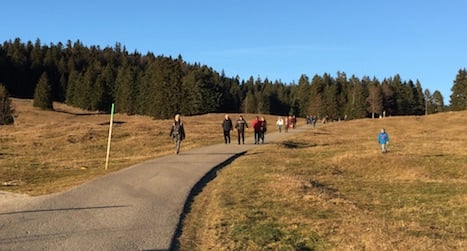Skiers and snow boarders were hardest hit in Western Switzerland where mountain resort operators were forced to offer alternative activities for visitors unable to access bare slopes, with hiking one of the most popular options.
MeteoSwiss, the national weather office, said up to 30 centimetres of snow fell on the weekend and more is forecast this week.
From ten to 20 centimetres was recorded in the lower part of the canton of Valais, the Chablais region and the Jura, the office said.
The Dôle in the Vaud Jura, which was without snow last week, received a dump of 30 centimetres.
In German-speaking Switzerland, mountain areas received from ten to 20 centimetres.
With the arrival of fresh snow, the avalanche risk has risen in several regions of the cantons of Vaud and Valais, including the Val Ferret (Valais) and Les Diablerets (Vaud Alps), where the danger level has reached four on a scale up to five.
Further accumulations of 75 centimetres to one metre are expected in the Swiss Alps this week, although lower elevations will be spared, according to the MeteoSwiss forecast.
The snow disrupted road traffic on routes through the mountains on Monday, when a ban was imposed on trucks travelling through a section of the A13 motorway from Thusis in the canton of Graubünden and Roveredo in the canton of Ticino.
Exceptionally, Ticino in southern Switzerland has remained without snow, with rainfall of one to five millimetres over the weekend ending a 64-day period of drought.
The precipitation was insufficient to reduce the forest fire risk, which remains high in the Italian-speaking canton, MeteoSwiss said.




 Please whitelist us to continue reading.
Please whitelist us to continue reading.
Member comments